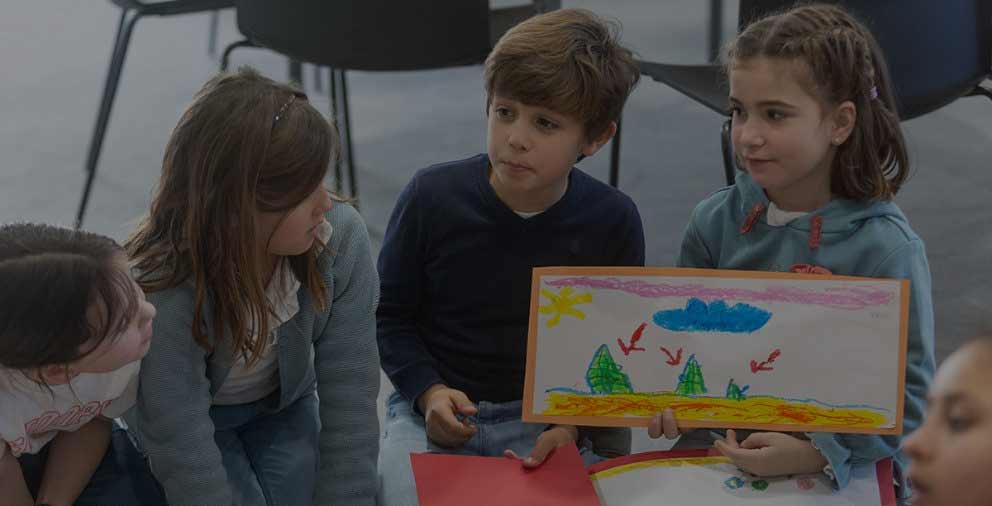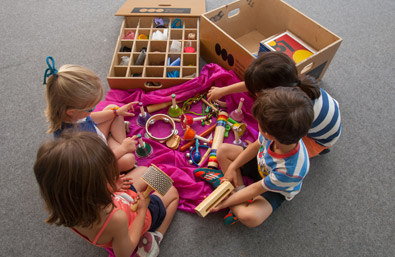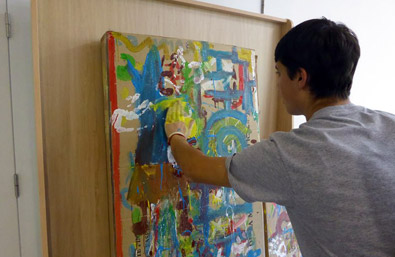The proposals for the 2025-2026 school year are inspired by various works of art from the Museo Universidad de Navarra collection.
Through different techniques and using active and collaborative learning methodologies, the Museum's educational team provides teachers with materials specifically adapted to cover different basic knowledge, favoring the acquisition of skills through participatory and collaborative activities, carried out in a playful environment.
Teachers' notebooks and other support materials are used to adapt the activity to the specific needs of each group.
Educating the attentive gaze through contemplation serves as a starting point for a practical creative proposal, for reflection on a theme and for personal and group work.
The design of each program is adapted to the specific situation of each center and educational level, thanks to the coordination with the teaching staff of each school.
Contact the team by email at educacionmuseo@unav.es or by phone at 686 239 987.
With the collaboration of

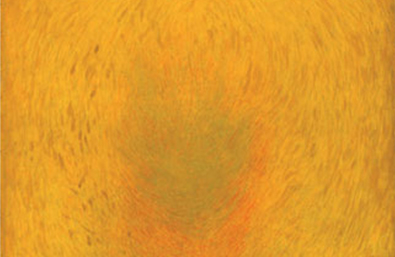
INFANT 1st CYCLE
THE KIDS' MUSEUM
This program is designed to be carried out in children's schools. The educational resources include stories, reproductions of some of the Museum's works of art, a discovery box and a musical kit to approach contemporary art in a playful way.
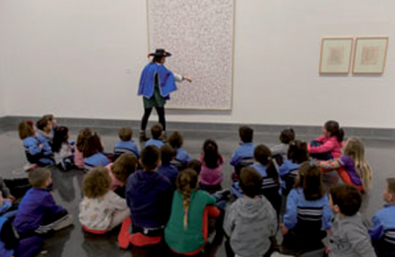
INFANT 2ND CYCLE
PRIMARY 1st and 2nd
SING, DANCE, COUNT, PAINT!
This program proposes several artistic activities that help develop observation, creativity, the emotional world, personal initiative and communication skills, including English language and socialization, among other aspects. Thus, competencies such as artistic or learning to think can be acquired. The whole educational program is articulated through a story that serves as a common thread for the different activities of gestural song, corporal expression and plastic creativity.
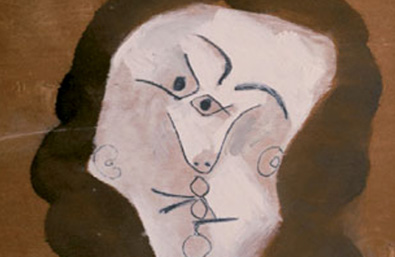
THE DANCE OF EMOTIONS
Emotional intelligence begins to be worked on in this program through dance, music and the Museum's artistic works. Identifying emotions and the facial and body expressions they entail, as well as empathizing with the emotions of others are some of the aspects worked on.
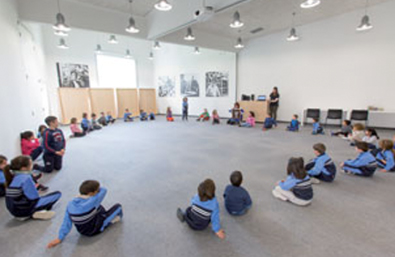
1ST, 2ND, 3RD, 3RD, 4TH GRADE
THE DANCE OF MULTICULTURAL EMOTIONS
The main purpose of this program is to help foster a multicultural perspective among students. For this purpose, we use dynamics of corporal expression of basic emotions associated with a diversity of music and dances of the world, favoring non-verbal communication. The aim is to develop the emotional intelligence of students, helping them to recognize emotions and their regulation, focusing especially on empathy, to understand the emotional world of others. In addition, students will be able to make a plastic creation of the different emotions experienced as a group during the dance of emotions and then share their work.
FINANCE:
![]()
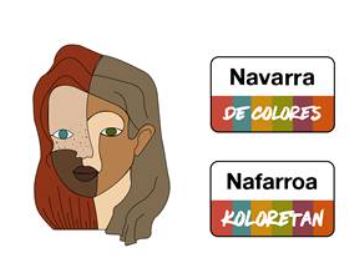

PRIMARY 3RD AND 4TH GRADES
EL CUADRITO FEO, AFTER CECILIA PAREDES AND ANTONI TÀPIES
Why are we different? How are we the same? What are the advantages of diversity and difference? diversity and difference? In this program works on the acceptance of differences differences and the inclusion of all people all people by using recognition and recognition and emotional emotional management. In addition, the aim is to to make progress with students on issues related to the related to the gender perspective. gender perspective. In addition, we will promote creative intelligence focused on the colors of the colors of difference through the the realization of different plastic plastic activities. The students will will intervene works of Cecilia Paredes and Antoni Tàpies and Antoni Tàpies, contributing their creativity. creativity.
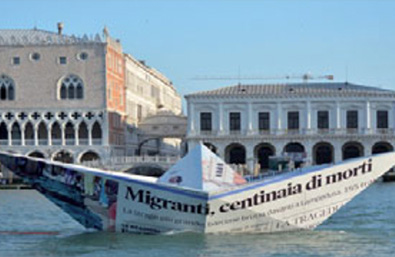
ELEMENTARY 5TH AND 6TH GRADES
MIGRANT STORIES, AFTER CECILIA PAREDES AND VIK MUNIZ
Through the works of artists Cecilia Paredes and Vik Muniz, students will take a journey through some migration stories. Thus, they will be able to think about the difficulties involved in the concept of "vital journey". Knowledge of this reality, empathy towards migrants and the vision of a complex, global and multicultural world will be some of the aspects to be worked on. To this end, a creative activity will be carried out in which students can create their own story of the migrant journey.
FINANCE:
![]()

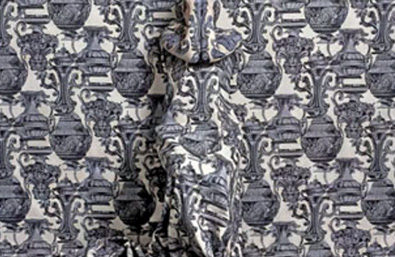
ELEMENTARY 5TH AND 6TH GRADES
THE INVISIBLE ARTIST
This program focuses on the visibility of women in past and present society. To this end, it pays special attention to the works of women artists that are part of the Museum's collection. More specifically, students will carry out a creative work in which they will integrate their own image by camouflaging it, inspired by the work of Cecilia Paredes. In this way, and through a motivating activity, the students will be able to be artists for a day.
OTHER FEARS
Fear is a basic emotion that can appear in people throughout their lives. It is something normal and convenient, even from an evolutionary point of view, as are the rest of the emotions. What is interesting from an educational point of view is how people face these fears and the tools, strategies and techniques that can be used to overcome them. Managing fears properly becomes a way to advance in our freedom, knowledge and personal maturity. This workshop, based on the temporary exhibition of the artist Antoni Muntadas "Other fears", seeks to detect various fears and, in a playful and creative way, reflect on the various strategies to deal with them.
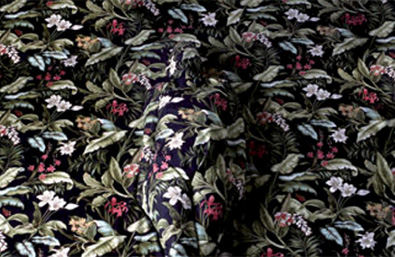
SECONDARY
WOMEN IN THE ARTS
This program takes a look at some of the through some of the main moments in the history of art, focusing on the the role played by women and their women have played and their evolution as professionals professionals in the contemporary art world. contemporary art. After focusing on some of the current artists, a creative a creative individual work will be individual work where the role of women in role of women in society.

SECONDARY AND BACCALAUREATE
MIGRANT STORIES, AFTER CECILIA PAREDES AND VIK MUNIZ
Through the works of artists Cecilia Paredes and Vik Muniz, students will take a journey through some migration stories. Thus, they will be able to think about the difficulties involved in the concept of "vital journey". Knowledge of this reality, empathy towards migrants and the vision of a complex, global and multicultural world will be some of the aspects to be worked on. To this end, a creative activity will be carried out in which students can create their own story of the migrant journey.
FINANCE:
![]()

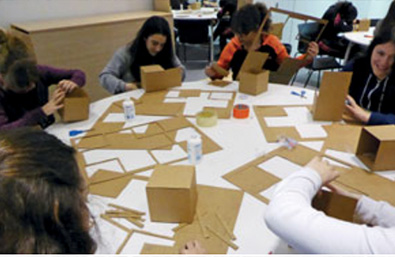
SECONDARY
BACCALAUREATE FIRST COURSE
OTHER FEARS
Fear is a basic emotion that can appear in people throughout their lives. It is something normal and convenient, even from an evolutionary point of view, as are the rest of the emotions. What is interesting from an educational point of view is how people face these fears and the tools, strategies and techniques that can be used to overcome them. Managing fears properly becomes a way to advance in our freedom, knowledge and personal maturity. This workshop, based on the temporary exhibition of the artist Antoni Muntadas "Other fears", seeks to detect various fears and, in a playful and creative way, reflect on the various strategies to deal with them.
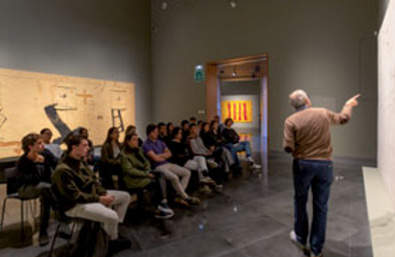
HIGH SCHOOL
10 ART MOVEMENTS YOU SHOULD KNOW
This program is a journey through 10 representative movements in the history of art. Through a selection of works and a visit to the main exhibition of the Museum, we can work on aspects of the contents of the works and the techniques used, trying to approach in a global and comprehensive way to the understanding of our world.
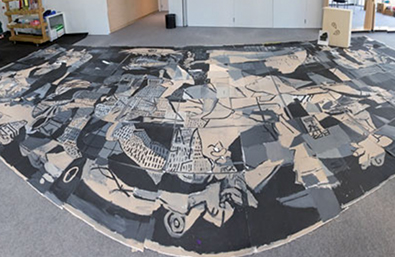
2ND AND 3RD CYCLE OF PRIMARY SCHOOL
IF I WERE PICASSO
This program will work on inclusion and peaceful coexistence through the work of Pablo Picasso and other artists of the Museum. Students will visit works such as "Mousquetaire. Tête" and will carry out an individual creative work on the theme of peace. In addition, participants will make an individual contribution to the collaborative work "Hilando la paz, after Millares", a project in which other schools will also participate with the aim of creating a joint mural.
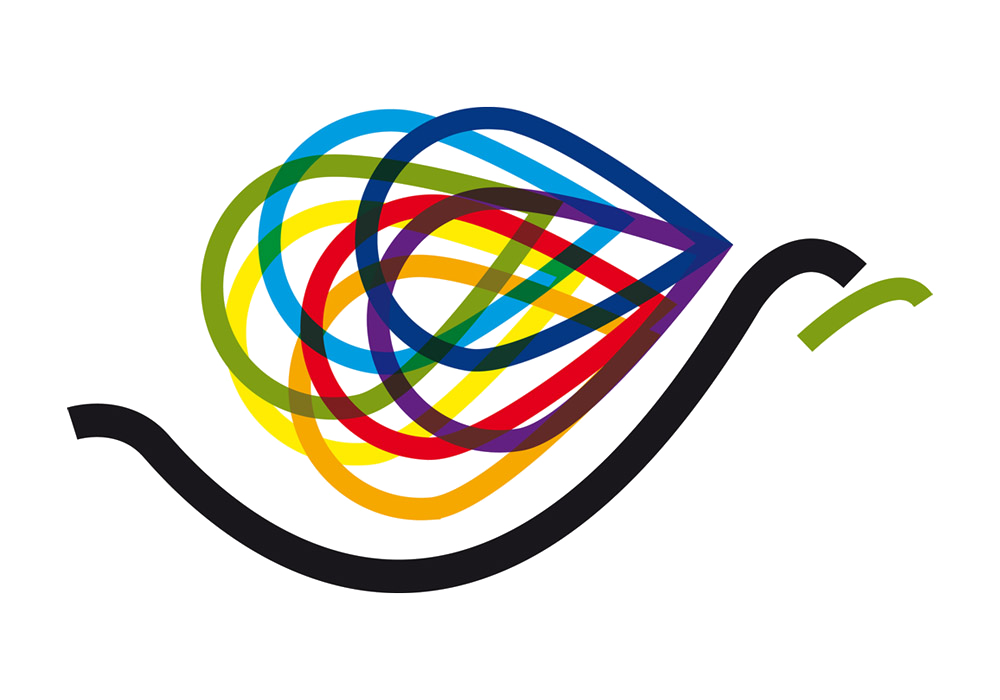
DOWNLOAD
PRIMARY, SECONDARY AND BACCALAUREATE EDUCATION
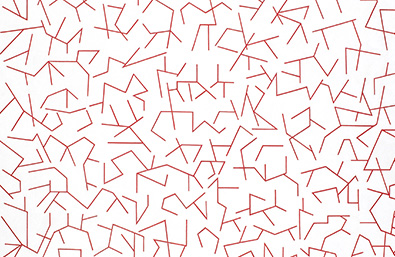
SECONDARY AND BACCALAUREATE
DIVERSITY AND COEXISTENCE. BULLYING PREVENTION
This program is specifically aimed at fostering the acceptance of differences and the promotion of peaceful behaviors in the classroom that reinforce "learning to live together in society". The students will take a tour of some of the Museum's works that help us to become aware of the importance of generating a culture of peace in different contexts, including social networks. In addition, they will express their vision on this topic in a creative work that they will be able to explain in a common discussion. Finally, participants will make an individual contribution to the collaborative work "All together, all different", a project in which other schools will also participate with the aim of creating a joint mural.

